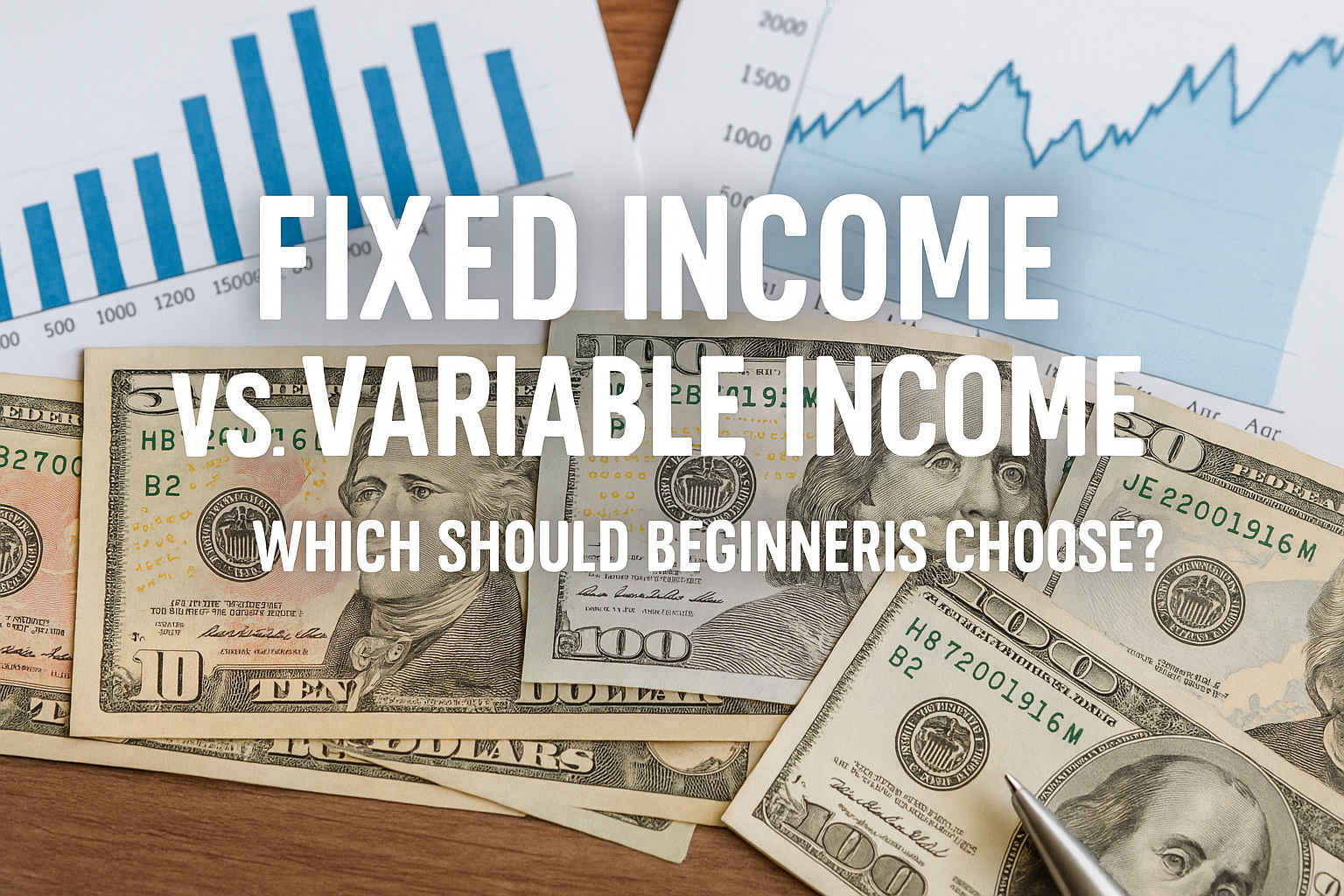When starting your investment journey, one of the most fundamental decisions is choosing between fixed income and variable income. Each represents a different strategy, risk level, and return potential. Understanding how they work will help you build a more secure financial future.
What Is Fixed Income?
Fixed income investments offer predictable returns over a set period. You’re essentially lending money to an entity—usually a government or corporation—that agrees to pay you interest regularly and return the principal at maturity.
Common Types of Fixed Income Investments
- U.S. Treasury Bonds and Notes
- Certificates of Deposit (CDs)
- Corporate Bonds
- Municipal Bonds
- Fixed Income Mutual Funds
- Money Market Accounts
Benefits of Fixed Income
- Predictable returns
- Lower risk
- Less volatility
- Ideal for short- to mid-term goals
- Good for risk-averse investors
What Is Variable Income?
Variable income investments do not guarantee a fixed return. Their value fluctuates based on market performance, and while this introduces risk, it also opens the door to higher rewards.
Common Types of Variable Income Investments
- Individual Stocks
- ETFs (Exchange-Traded Funds)
- Mutual Funds
- REITs (Real Estate Investment Trusts)
- Cryptocurrencies (high risk)
Benefits of Variable Income
- Higher return potential
- Suitable for long-term growth
- Opportunity for dividends and capital appreciation
- Can outpace inflation over time
Key Differences Between Fixed and Variable Income
Risk Level
- Fixed income: Generally low risk (e.g., U.S. Treasury Bonds).
- Variable income: Higher risk due to market volatility (e.g., stocks).
Return Potential
- Fixed income: Stable but often lower returns.
- Variable income: Can generate higher returns, especially over the long term.
Liquidity
- Fixed income: May have lock-in periods (e.g., CDs).
- Variable income: Typically more liquid and easy to buy/sell.
Investment Horizon
- Fixed income: Better for short- and medium-term goals.
- Variable income: Ideal for long-term goals like retirement.
Income vs. Growth
- Fixed income: Prioritizes steady income.
- Variable income: Focuses on capital appreciation.
Which One Should a Beginner Choose?
There’s no one-size-fits-all answer. Your ideal choice depends on your goals, timeline, and risk tolerance.
Scenario 1: Low Risk Tolerance
If you’re cautious about losing money, start with fixed income. Treasury bonds or high-yield savings accounts can help you build confidence while earning steady interest.
Scenario 2: Long-Term Growth Goals
If you’re in your 20s or 30s and saving for retirement or wealth-building, variable income (especially index funds or diversified ETFs) may offer better long-term gains.
Scenario 3: Short-Term Needs
Need the money in a year or two? Fixed income is safer and more predictable, minimizing the risk of market downturns.
Scenario 4: Balanced Approach
Consider a hybrid strategy like the classic 60/40 portfolio—60% stocks, 40% bonds—or adjust the balance to match your personal risk profile.
Tips for New Investors
- Start Small: Use platforms that allow fractional shares.
- Diversify: Mix asset types to reduce risk.
- Stay Consistent: Invest regularly, even small amounts.
- Keep Learning: Follow trusted sources and financial blogs.
- Build an Emergency Fund First: Before investing, save 3–6 months of expenses.
Mistakes to Avoid
- Chasing High Returns Without Understanding Risk
- Ignoring Inflation
- Overreacting to Market Fluctuations
- Not Researching Before You Invest
- Investing Without a Goal
Final Thoughts: Choose With Clarity and Purpose
Starting your investment journey with a clear understanding of fixed vs. variable income can make a significant difference. There’s no pressure to choose one over the other immediately. Many successful investors combine both to match their evolving financial goals.
Whether you’re seeking safety or growth—or a balance of both—making intentional choices now will set the foundation for financial security and independence in the future.
